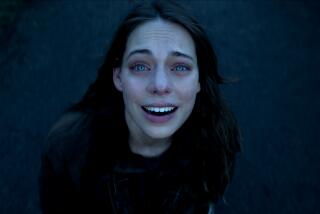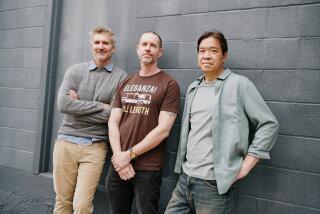Human Life Is Ready for Its Close-Up in ‘Nova’ Miniseries
- Share via
After watching the spectacular footage of microscopic life in the “Nova” miniseries “Odyssey of Life,” one can only conclude that we humans are indeed the result of a miracle of evolution and creation. But why can’t someone do something about all those tiny bugs that are mistaking our bodies for 24-hour truck stops?
When the particularly unattractive hair-follicle mite emerges from its comfy little home in a hole in our scalp, for example, it often takes a road trip to our eyelids, where it chows down on one of its favorite delicacies--eyelash (most mites love it covered with fatty, oily mascara).
You may need to keep an antacid by your side, but these and other extreme close-ups of the life teeming on and in our bodies are well worth the watching in the three-part PBS series beginning Sunday.
Bacterial guru and photographer extraordinaire Lennart Nilsson is the tour guide, and what a tour it is. From the “museum beetle,” which dines on the dead stuffed animals in our most hallowed halls of culture, to the armies of bacteria that frolic in our mouths, Nilsson shows us things we never dreamed were going on in “the tropical rain forest” of our scalps and “the vast wasteland of the sole . . . of our foot,” as narrator David Ogden Stiers deadpans.
Although such scenes in Part 2 of the series might carry a PG (particularly gross) rating, Part 1 is definitely for kids--very small kids.
Famous for his original pictures of human conception and birth in Life magazine in 1965, Nilsson here lays out the breathtaking, unfathomable development of the embryo. We are witness to the very beginning of cell division just one day after the fusing of sperm and egg; the formation of the head five weeks later; the development of hands and feet at 12 weeks. All this culminates with a live birth.
“Odyssey” does not confine itself to humans. The human embryo, in fact, is indistinguishable in its early stages from that of a pig or a chicken. But it is the stark similarity--throughout gestation--to the ape that is particularly striking: “The final proof of evolution,” the narrator declares.
Whatever a person’s sociopolitical beliefs, it is hard not to be awe-struck by the wondrous processes captured by Nilsson (whose techniques are the subject of Part 3). Now pass the mascara, please.
* “Odyssey of Life” airs on “Nova” at 9 p.m. Sunday and 8 p.m. Monday and Tuesday on KCET-TV Channel 28 and at 8 p.m. Monday, Tuesday and Wednesday on KOCE-TV Channel 50.
More to Read
The complete guide to home viewing
Get Screen Gab for everything about the TV shows and streaming movies everyone’s talking about.
You may occasionally receive promotional content from the Los Angeles Times.






